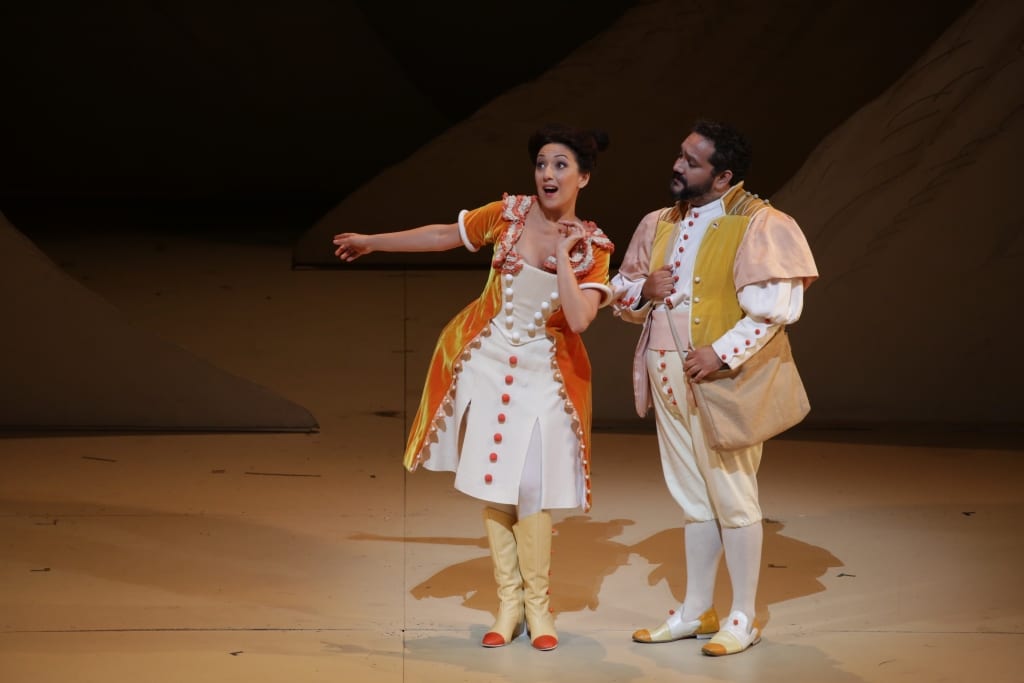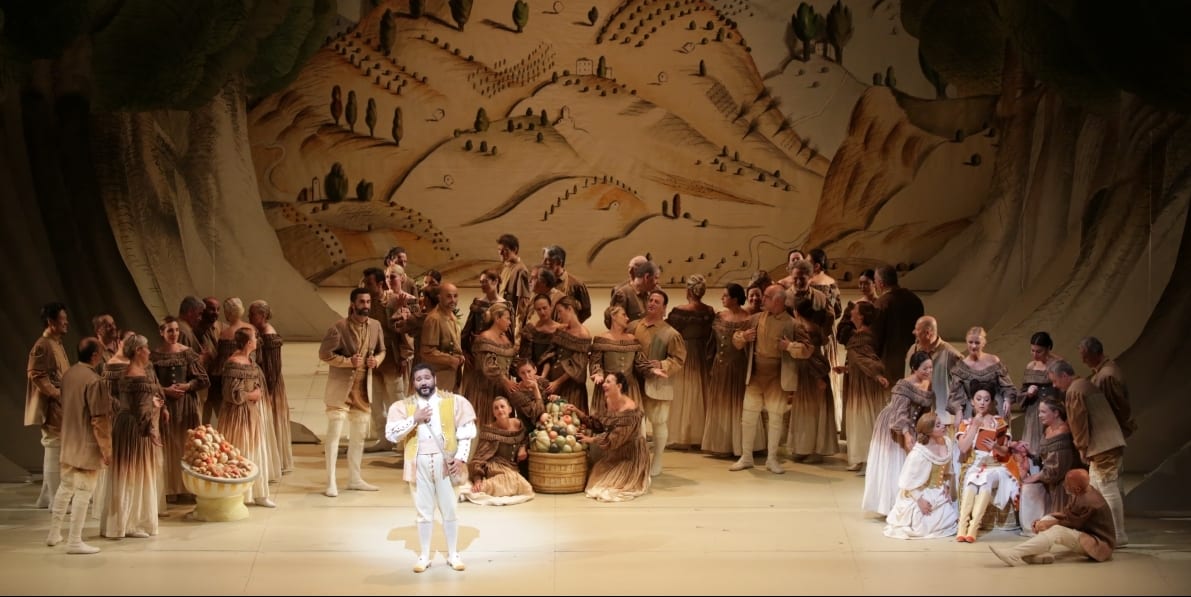La Scala’s audience will not tolerate mediocracy from their leading singers nor from their orchestra. They love their operas and expect from their ensembles nothing short of excellence, a fact that some singers, including Pavarotti in 1996, learnt to their cost. This production of Donizetti’s L’elisir d’amore, lived up handsomely, to the expectations of the audience as expressed by the rapturous applause.
L’elixir d’amore, a comic masterpiece, was first performed in 1832, at the Teatro alla Cannobiana, Milan ( in 1894, it was renamed Teatro Lirico, Milan). It was an instant success and became Donizetti’s most popular opera.
Grischa Asagaroff, who is no stranger to directing Donizetti’s operas, is responsible for this vibrant, colourful and enchanting production. His interpretation of L’elisir d’amore explores the humour of youthful love through elements that conjure up fairytale characters and pantomime. The set is not of a rustic village, as per libretto, but of an enchanted forest with candy-like structures.
Adina, the rich tenant farmer is beautifully performed by the light-footed Rosa Feola. She moves across the stage with feather-like agility. Pigtailed and wearing a waisted dress with a bell-shaped skirt in different colour shades and lots of buttons, she performs with an almost dance rhythm throughout the performance. Feola’s Adina is a confident and flirtatious lass. Her singing smoothly glides from teasing to seriousness. Her Prendi, per me sei libero in Act two is exquisite. This aria has a high tessitura and oropesa, blending it beautifully with lovely coloratura.

Nemorino, the young peasant passionately in love with Adina, is joyfully and romantically performed by the American tenor, René Barbera. The dramatic timbre of Barbera’s voice conjures a rather confident Nemorino. He is a young man determined to have the woman he loves and make her fall for him. He has a beautiful bel canto voice, but limited versatility in his interpretation of his character. In Una furtiva lagrima he opens with dulcet tones rising to a heartfelt climax.
Many of the comic elements have been introduced by the giant Ambrogio Maestri, performing as the quack doctor Dulcamara, who sells to the desperate Nemorino cheap red wine as a ‘love potion’. Maestri, dressed as a clown with hairdo which is reminiscent of the distinctive blue mop of the cartoon character Marge Simpson. Maestri’s bass voice injects brio and humour into the score in equal measure. On the other hand, the character of Belcore, performed by Massimo Cavalletti, Nemerino’s potential rival, pales in the face of Grigolo’s performance.

Tullio Pericoli’s set and costume design place the narrative for the whole production in a semi-fantastic bubble where melodious lyricism exposes the characters’ personalities and emotions through humour and parody. Adina’s and Nemorino’s costumes mirror each other, reflecting the same social class. He is not the poor peasant as defined in the libretto, but is her equal, socially. Emotionally, he is besotted by her, which puts him at a disadvantage, that is, until she realises that she is actually in love with him.
The set, designed by Tullio Pericoli depicts an enchanted forest in which emotions loosen up when vino rose is taken to be a love potion. Nemorio’s duets with his beloved Adina, Barbera and Feola display good chemistry onstage.
It all adds to a delightful evening.

